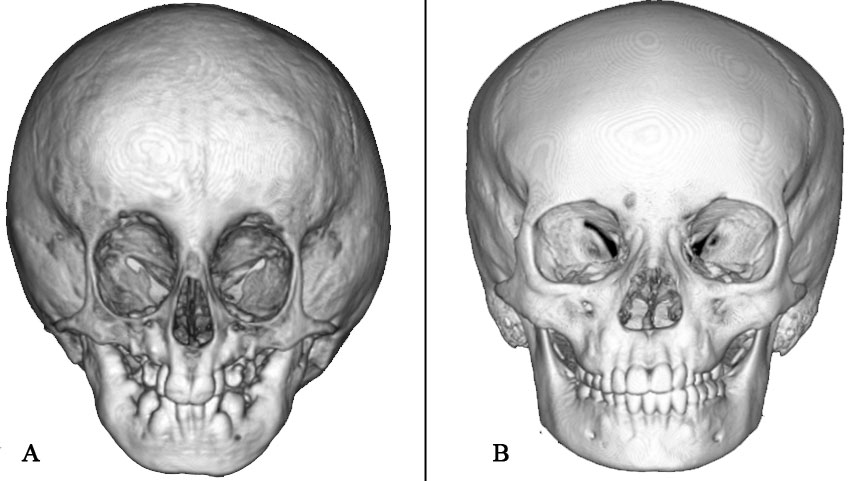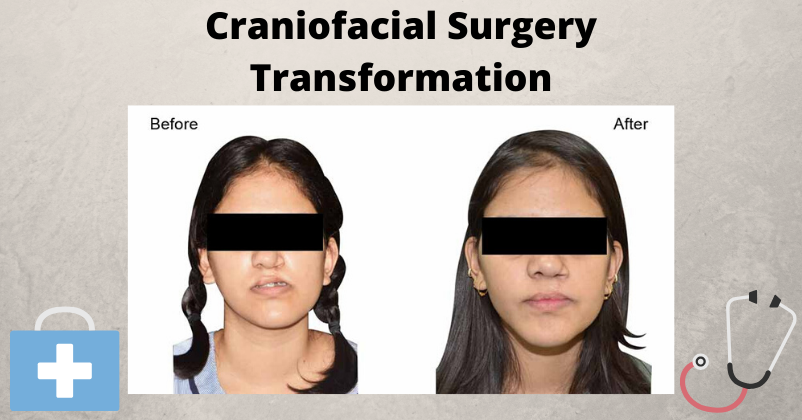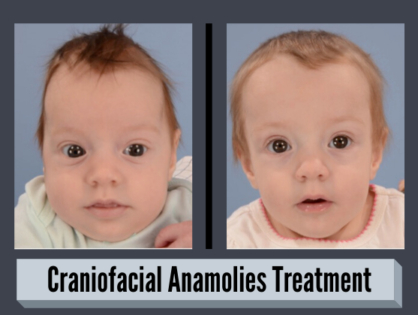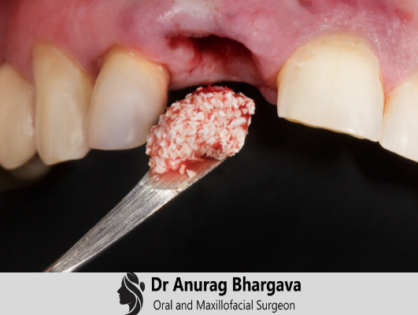Want to know everything regarding craniofacial surgery? You have landed here which means you want to know about any aspect of it if not everything. Whatsoever your query is, I will try to resolve it in the best possible way. First, let's check a basic introduction to the surgery.
What is Craniofacial Surgery?
Craniofacial surgery is the type of surgery that includes several surgical procedures used to rectify issues with the head, skull, face, and neck.
In many cases, surgery is needed to improve many functional problems like to create more space inside the skull to allow the brain to grow, or to provide better protection for eyes, or to make breathing.
Craniofacial surgery is done on very young patients. Therefore, parental consent and consultation are required for the treatment process. In case if the surgery is done for purely cosmetic reasons, parents will be enquired thoroughly, whereas surgeries performed of several functional problems are easier to make.
However, with complex surgeries, the risk of complications is higher. But as for craniofacial surgery, complications are rare. Oral and maxillofacial surgeons in Indore like Dr. Anurag Bhargava are expert doctors who may lower the risks during the surgery.
Benefits of Craniofacial Surgery
Craniofacial surgery rejoins damaged bone and tissues and improves the look of spoiled areas of the face and head. In the case of young children with craniofacial abnormalities, timely surgery can reduce the impact of these conditions on growth, development, and function.
1. Improved Functionality
Craniofacial surgery can help improve the functionality of the face and neck, making it easier for patients to eat, speak, and breathe. It can also improve the overall quality of life for patients who have suffered from facial deformities or injuries.
2. Enhanced Appearance
Craniofacial surgery can help improve the appearance of the face and neck, which can have a significant impact on a patient's self-esteem and confidence.
3. Restored Facial Features
Craniofacial surgery can help restore facial features that have been lost due to injury, disease, or congenital deformity. This can help patients feel more like themselves and improve their quality of life.
4. Improved Breathing
Some craniofacial surgeries are designed to improve breathing by opening up airways that have been obstructed due to facial deformities or injuries.
Candidate for Craniofacial Surgery
There are two categories of people who may need craniofacial surgeries. The first category includes those who have congenital abnormalities of the bones, muscles and other tissues of the skull and face. The other category includes asymmetries in the skull and face later in life, usually through diseases or trauma. The issue this group suffers is called acquired abnormalities. Oral and maxillofacial surgeons in Indore like Dr.Anurag Bhargava helps correct such defects.

Conditions Included in Craniofacial Surgery
Cleft lip and cleft palate are the most common conditions that require craniofacial surgery. Other inborn and acquired abnormalities treated with this surgery include:
- Jaw deformities
- Facial and jaw tumors
- Pierre Robin syndrome
- Craniosynostosis
- Treacher Collins syndrome
- Croutons syndrome
- Aperts syndrome
- Craniofacial trauma
Craniofacial surgery that involves trauma cases involves surgeries of the head and facial structures.
Performance of Craniofacial Surgery
Craniofacial surgery is performed by a team of expert surgeons. They are plastic and reconstructive surgeons, neurosurgeons, ophthalmic, oculoplastic (eye socket and associated structures) surgeons and otolaryngology (head and neck) surgeons.
Techniques of Craniofacial Surgery
1. Genioplasty
Genioplasty is the surgical technique to improve the chin which does not include the tooth-bearing part of the lower jaw. These surgeries are performed to move the chin forwards, backward, upwards or downwards and are administered via a cut made inside the mouth where lip joins the lower gum. The chin bone is cut horizontally below the level of the tooth roots and is then moved to a different position and attached therewith wires or titanium screws. These remain in place and are not required to be moved. The cut is then closed with dissolving stitches.
After genioplasty, patients may undergo numbness below the lower lip in the initial days. During the recovery period, an antiseptic mouthwash is a remedy for healing. Toothbrush on the lower teeth should be avoided for a week. Oral and maxillofacial surgeon like Dr. Anurag Bhargava performs excellent genioplasty.
2. Bone Graft
Bone grafting is taking bone from one place and using it for support or to fill gaps in another. For the procedure, a person's bone is reliable, offers longevity, good growth potential and reduced risk of infection than any artificial material. The widely used donor sites for bone grafts are the hip and skull, though bone from ribs or the tibia is also sometimes used.
Bone taken from the hip will leave a 10 cm long scar. Walking can be uncomfortable for a few weeks after the graft. A small tube is usually left at the bone graft donor site for a short time after the operation. Local anesthesia can be given to relieve pain. There should be no permanent effect on the appearance or function of the hip or leg.
3. Minimally Invasive Techniques: The Endoscopic Advantage
Minimally invasive techniques are revolutionizing craniofacial surgery by offering significant benefits for patients. One of the leading advancements in this area is endoscopic surgery. Unlike traditional open surgery that requires large incisions, endoscopic surgery utilizes small cameras and specialized instruments inserted through keyhole incisions.
Benefits of Endoscopic Surgery in Craniofacial Surgery
Reduced Scarring: Smaller incisions translate to minimal scarring, leading to a more cosmetically pleasing outcome.
Faster Recovery: Minimally invasive procedures typically result in shorter hospital stays, quicker healing times, and less pain for patients.
Improved Visualization: Endoscopes provide magnified views of the surgical site, allowing for greater precision and minimizing the risk of complications.
Reduced Blood Loss: Smaller incisions generally lead to less blood loss during surgery.
4. Distraction Osteogenesis: Growing New Bone for Facial Reconstruction
Distraction osteogenesis (DO) is a unique technique used in craniofacial surgery to gradually create new bone for facial reconstruction. Here's how it works:
Bone Separation: The surgeon makes a controlled cut in the desired bone segment.
Distraction Device Placement: A specialized device is attached to each bone segment.
Gradual Separation: Over a period of days, the surgeon slowly activates the device, causing the bone segments to separate gradually.
New Bone Formation: As the gap widens, the body naturally fills the space with new bone tissue.
Consolidation: Once the desired gap is achieved, the device is removed, and the newly formed bone consolidates into solid bone.
Applications of Distraction Osteogenesis:
- Lengthening the jawbone for improved function and aesthetics.
- Correcting craniosynostosis (premature fusion of skull sutures) by creating space for brain growth.
- Reconstructing facial structures after trauma or surgery.
5. 3D Imaging and Computer-Aided Surgery: Precision Planning for Optimal Results
The field of craniofacial surgery is embracing technological advancements to achieve even better outcomes. Here's how 3D imaging and computer-aided surgery (CAS) are playing a crucial role:
3D Imaging
CT Scans and MRIs
These imaging techniques create detailed 3D models of the patient's skull and facial structures.
Virtual Surgical Planning
Surgeons can use these models to plan the surgery virtually, simulating procedures, and anticipating potential challenges.
Computer-Aided Surgery (CAS)
Surgical Navigation
During surgery, surgeons can utilize real-time computer guidance systems to ensure precise placement of implants and grafts.
Customized Implants and Plates
3D models can be used to design and create customized implants and plates that perfectly fit the patient's unique anatomy.
Benefits of 3D Imaging and CAS
- Improved Surgical Accuracy: Precise planning minimizes the risk of errors and leads to better surgical outcomes.
- Enhanced Patient Safety: Virtual planning allows for anticipating potential issues and developing strategies to address them.
- Faster Surgery Times: Preoperative planning can streamline the surgical process, leading to shorter surgery times.
Summing it up
Craniofacial operations are a new subspeciality of plastic surgery that has altered the lives of many people. It is due to the efforts of Tessier that this domain of surgery came into existence. It has now become a trusted discipline for the management of abnormalities of the craniofacial area that may be because of birth or malignancy.
Craniofacial surgery is special in the sense that it involves the investigation of the areas that allow a very little margin of mistake. Improper knowledge of anatomy, inadequate training, and surgical inexpertise can lead to unfavorable results even to the death of the patient. This involves teamwork where all members have to work cordially to achieve good results.
Though craniofacial surgery carries a risk but with better equipment, investigations, anesthesia and accumulative surgical experience, it is more successful. Even in India, this difficult surgery now becomes quite safe with low morbidity and mortality. Oral and maxillofacial surgeons in Indore like Dr. Anurag Bhargava is a trained doctor for craniofacial surgery.



